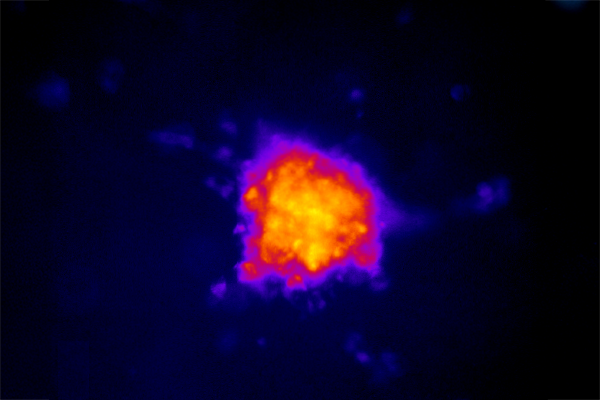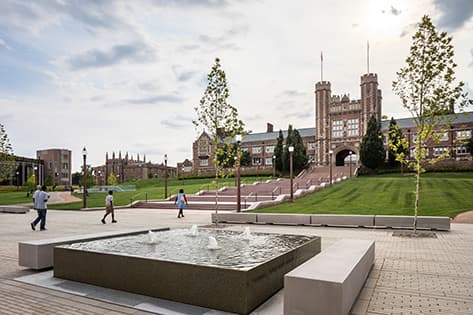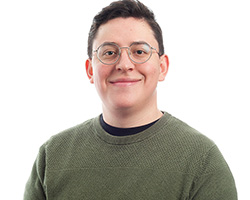Feature or flaw? Breast cancer cells remember low-oxygen environments
Amit Pathak’s lab investigates how breast cancer cells use memory of hypoxic tumors to move through dense tissue

Cancer cells can sense and remember the properties in their environment, triggering various signals and processes. New research from the McKelvey School of Engineering at Washington University in St. Louis into how cancer cells respond to the amount of oxygen in their environment sheds light on how tumors invade healthy tissue.
The laboratory of Amit Pathak, professor of mechanical engineering & materials science, and his collaborators found that the combination of the cancer-related conditions of low oxygen and denser collagen in tissue led to more aggressive invasion of tumor cells. But is that a feature or a flaw?
“Tumor cells see these varying levels of oxygen in their trajectory from growing in the tumor to escaping and circulating, and very little is known how they handle these low-oxygen variations,” Pathak said. “We didn’t know if they got bogged down by it or if they used it.”
Results of the research were published July 1, 2025, in Molecular Biology of the Cell.
In experiments with healthy human epithelial cells and human breast cancer cells, José Almeida, a former doctoral student in Pathak’s lab and now a postdoctoral scholar the Janelia Research Campus of the Howard Hughes Medical Institute, found that the cancer cells remembered being in a low-oxygen environment and showed that memory by migrating faster and deforming their collagen environment. When Almeida increased collagen density by about 50%, cell invasion in normal oxygen conditions reduced.
“When the collagen becomes denser, that should slow down migration because it's a more crowded environment for the cells to move through,” Pathak said. “But when we did these experiments in low-oxygen conditions, then put the cells into normal oxygen conditions in denser collagen environments, the cancer cells actually migrated faster. And that is interesting because as the tumor microenvironment for breast cancer increases and progresses, it becomes denser. If it's denser, it is a hallmark of a tumor progression.”
The team then set out to find out why low oxygen is an advantage to cancer cells, especially in denser environments.
“We found that when cancer cells are exposed to low oxygen, and even if they leave low oxygen and they see a dense environment, they start depositing the protein laminin332, which provides them with extra adhesions and lowers their energy barrier for migration,” Pathak said. “When we deplete these cells of low oxygen signaling through inhibitors, or we knock down another molecule called Cdh3, which is in the pathway of laminin, then none of this happens.”
Almieda said he was surprised by how cancer cells overcame higher collagen density environments and how they use laminin332 to invade.
“It really highlights how adaptable these cancer cells are and why it is so tricky to keep metastasis in check for aggressive types of cancer,” he said.
Now that it has shown these results in cell lines, Pathak’s lab plans to work with primary cells and preclinical models.
“Understanding how cells interact in these hypoxia gradient spaces is key to furthering our understanding of how the extracellular matrix influences cancer cell behavior and how changes in stimuli or the history of what these cancer cells are exposed to can provide insight into their behavior as cancer progresses,” Almieda said. “I believe these findings can provide further information on how cells are influenced by extracellular environments, not only collagen but in combination with oxygen gradients and many other factors, that allows different cell behaviors to emerge. I am hopeful that this is one small piece to a larger picture of understanding how cellular history triggers emergent cell behaviors for cancer cells.”
Almeida JA, Avila DB, Longmore GD, Pathak A. History of hypoxia exposure aids future cell invasion according to cell type and collagen density. Molecular Biology of the Cell. July 1, 2025. DOI: https://doi.org/10.1091/mbc.E24-12-0580.
This research was supported by funding from the National Institutes of Health (R01CA254060, R35GM156571





